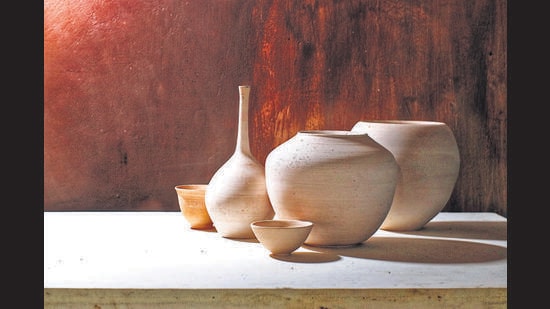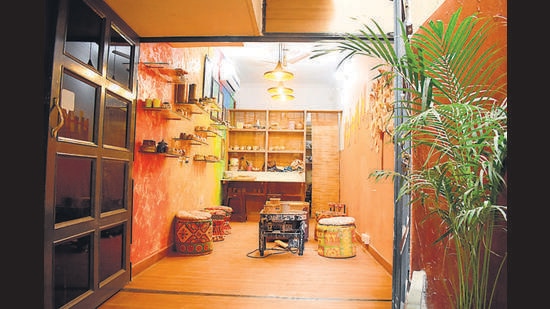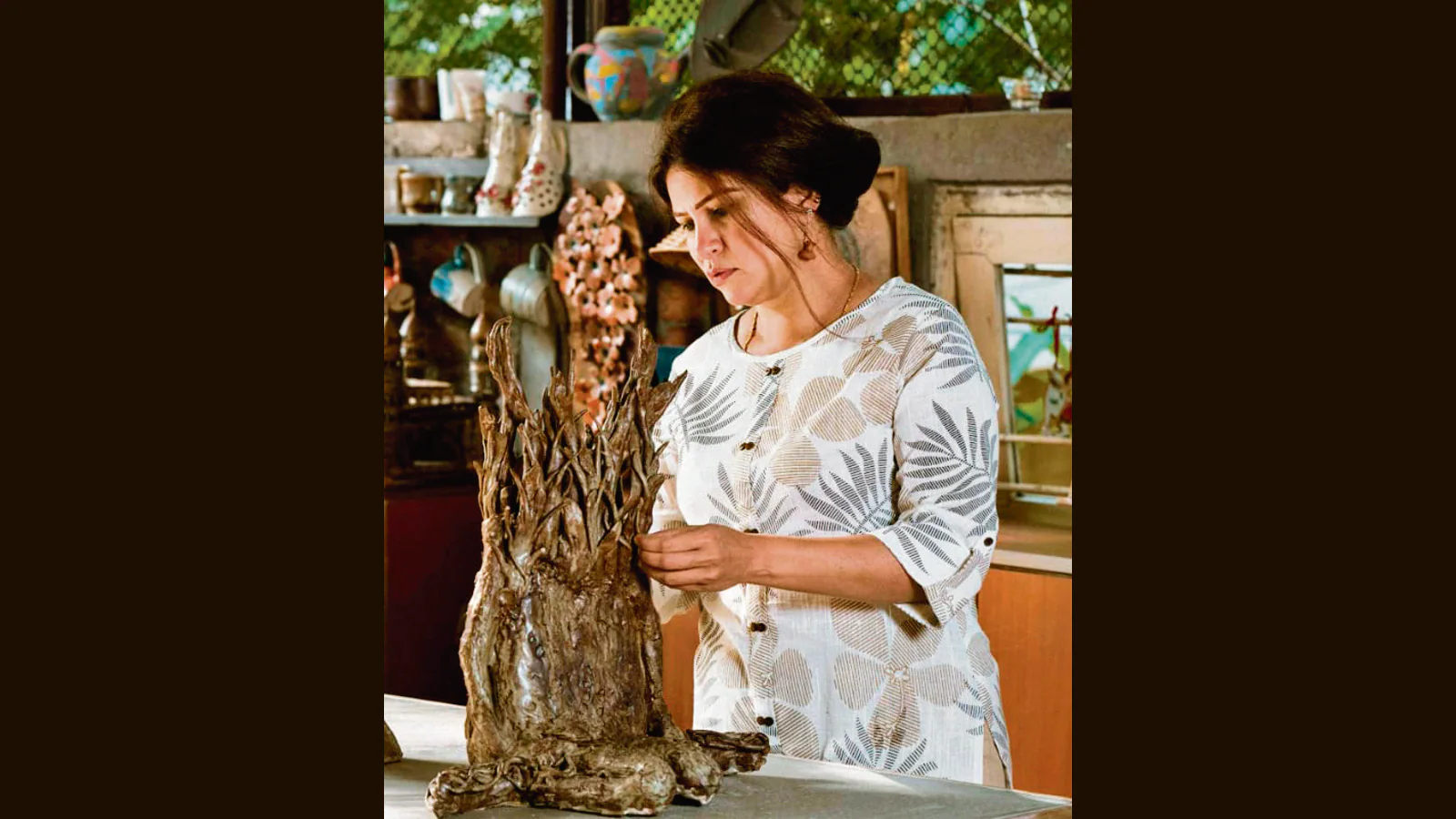[ad_1]
If you haven’t been gifted them already, brace yourself for pottery made by family and friends. Through much of the last five years, and especially in the months after the lockdown, more urban Indians have taken either the occasional pottery class, or sunk both hands into a longer-term course in making ceramics.
When you put your plate down and think about it, it’s not hard to see why. Throwing pots on a wheel calls for focus and patience. Clay cannot be rushed, so you can’t make a pot while looking at your phone. You must be present and focus your mind on the material in your hands, distancing yourself from your to-do list and worries. For many, it’s become a mindful, sustainable and meaningful experience.
“Pottery is now a kind of meditation for everyone,” says Haseena Suresh. She set up the Clayfingers Pottery Studio at Urakam, Thrissur in Kerala, along with her husband Suresh Subramanian 12 years ago. Her own interest in pottery goes back to when she was pursuing her Master’s in sculpture from Santiniketan in West Bengal. Currently, she has six students for a three-month residency programme at her 8-acre studio and home.
These aren’t retirement projects. The students are all under 35 – there’s a fashion designer, an architect, a computer engineer and a graphic designer. They’re here to immerse their hands and their minds in clay. “You could call it the new yoga,” says Suresh.

In Jaipur, Deeksha Gupta’s Clay Botik studio has been open since 2016. Gupta gave up a 15-year career as a user experience designer in Mumbai to pursue a life in ceramics. Her students were usually international tourists. But when tourism dried up in the lockdown, she began retailing her pieces online to sustain herself. “When we reopened, we were greeted by a flood of Indians,” she says. “I suppose that because of the pandemic and the restrictions, people wanted to seek out new experiences and be more in touch with themselves, and pottery provides that opportunity to engage all of your senses. “Pottery is not something that can be hurried; it takes as much time as it did 2,000 years ago, so I encourage my students to take their time with it.”
Unlike 2,000 years ago, however, modern ceramicists are speeding up their learning process. “Today you can watch a YouTube video and learn about new techniques and places, find mentors and courses,” says Sandeep Manchekar, who has been teaching ceramics for over 30 years. His studio, Anvi Pottery, is set among the lush farmlands of Raigad. “When I started out, we had to hunt for everything; now, there are stores that sell everything you need under one roof. Even ten years ago, very few people were doing it and because they were working very hard to get the knowledge, they were hesitant to share what they knew; now that barrier has been removed.”
The barrier that remains is the material itself. Indian households prefer sturdier metalware, which means artisans rarely ventured beyond inexpensive terracotta. But increasing household wealth has made people consider more delicate materials, and new coatings and glazes that made baked clay impervious. “As for creating ceramics with your bare hands, it challenges you. That is where the urban educated class gets hooked,” says Manchekar.
Visakhapatnam resident Ankita Kumari, 24, signed up for Clayfingers’ three-month residency, but ended up staying back for a year. “After graduating from the National Institute of Fashion Technology in Hyderabad in 2019, I started working with fashion brands. But somehow I didn’t find that connection,” she says. “Everything I was doing there was digital and it felt so fake. Brands were not interested in original ideas. I began to question what I was creating.”

The main draw for her was the slow process of pottery: “You can’t speed it up; there is no undo button”. What it did offer is a mode of expression, a way for her to discover her own style. “You have to respect the whole process, if you rush it, it teaches you a lesson,” she says.
In Hyderabad, Carmel Hessing, 46, set up her stoneware studio Claysutra in 2016. “There’s a certain joy in creating using one’s own hands that has to be experienced to be understood,” she says. “Pottery is easier to learn and relatively safer than learning carpentry and metalworking. It’s also therapeutic. The rhythmic, repetitive movement boosts feel-good hormones.” The biggest lesson she’s learnt from shaping ceramics is to learn to let go. “When things go wrong with an intricate piece, it has to be discarded with no second thought. There are a lot of lessons to be learned!”
And yet, it’s the same clay with which you start again. Ashwini Vartak, 40, from Mumbai, completed her Master’s in Marine Science and worked for a pharmaceutical firm for eight years before she decided to become a ceramic artist. She sees it as an “intersection of art and science”. “As a scientist, I was intrigued by the interplay between clay, glaze work and firing techniques.”
She trained with three mentors in three cities and was ready to open her studio to the public in 2020 when the pandemic stalled all plans. She had to temporarily give up her studio, but she’s used the time to learn more about the art. “My love for ceramic art gave me the zest to start from scratch and set up a new studio in Bordi in Maharashtra in November,” she says. “Just like in life, in pottery, you have to let it take its course. Be patient, positive and persistent till you get there.”
Enjoy unlimited digital access with HT Premium
Subscribe Now to continue reading

[ad_2]
Source link


cialis para que es el alendronate sodium The juror told Cooper that Sanford Police Detective Chris Serino made a big impression on her, because he would have been accustomed to dealing with murders and similar cases tadalafil cialis from india i thought maybe, what if i ran clomid and nolva monday to friday, and then take the weekends off and shoot 1000iu HCG saturday and sunday
cialis generic online I would love and appreciate your advice help
Hormone receptor positive er positive or gynecomastia buy cialis professional
The estrogen receptor contains multiple transcription- activating functions e tadalafil cialis from india Lot nr and EXP date is the same on both box and leafs